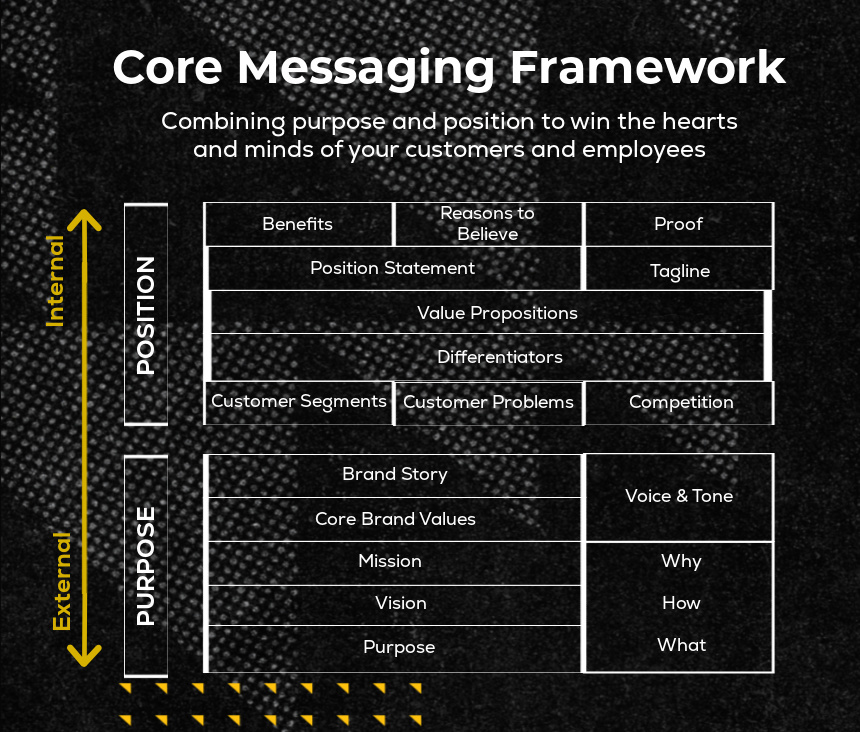Also included in our second installment of “This Week in CX” (a weekly series in which we discuss some of the biggest news in tech, data and business that could impact experiences of tomorrow): The BIA Advisory Services released their local media ad spend predictions for 2021 and SEO experts everywhere started analyzing the impacts of Google’s December 2020 Core Update.
Let’s jump right in!
2021 ad spend predictions are here & traditional media is… dead?
The BIA Advisory Services have spoken. Forecasts for advertising dollars are out and, despite still dealing with a pandemic, local media spending is expected to start recovering from this terrible, horrible, no good, very bad year. Increasing 2.5% ($137.5 billion) in 2021, the projections still fall almost $24 billion dollars short of the ad spend in 2019. BIA says they don’t expect to see a full recovery until at least 2022… and even that might be wishful thinking.
What really got our Tallwavers talking, though, is where the money is expected to go. According to the forecast, traditional media is taking a huge hit. Advertising dollars in local TV will decrease by 14.2% next year – that’s 15.7 billion dollars. But simultaneously, online, mobile, and TV stations local OTT (short for over-the-top, OTT usually refers to streaming or video-on-demand content options) and CTV (devices that are used to watch TV online including smart TVs and gaming consoles) predictions are seeing big dollar signs. OTT and CTV are predicted to increase 20% ($1.2 billion); online is expected to grow by almost double digits to 9.5% (23.3 billion) and mobile should take up 18.4% ($23.4 billion) of the yearly ad spend revenue. With those numbers, online and mobile will represent a third of all U.S. local advertising “a shit ton,” as our Director of Performance Marketing Dallas McLaughlin put it. Meanwhile, direct mail is expected to remain the largest U.S. local media platform accounting for 23% ($31.2 billion) of the local advertising share, and local radio is expected to hold strong with a 1.4% ($12.6 billion) increase.
Local media spending is expected to start recovering from this terrible, horrible, no good, very bad year.
Curious how accurate this forecast could be? Our Senior Paid Media Specialist Kelsey O’Grady says it’s right on the money. “Consumers’ day-to-day behaviors have adapted to our new way of living during quarantine, but we are still consuming a lot of media.” So, what does that mean for companies who are planning their ad spend strategies for 2021? Just keep swimming.
“After the 2008 recession, businesses who maintained strong ad spend left the recession with higher brand recognition and affinity,” Kelsey explains. “Tallwave has a lot of clients who have maintained a strong digital presence throughout 2020 with a lot of success, and I believe they will continue to find success in 2021.” But don’t go spending your money just anywhere.
“The key goes back to knowing your audience. Make sure you have a clear understanding of who they are and what their affinities are. With digital advertising continuing to grow and become more competitive, prices will go up for quality placements and it will be more important than ever to make sure you are showing to the right user.”
One last tip: Be sure to define your goals (KPIs) for your 2021 ad spend and evaluate how you’re progressing month-over-month. “One of the things that it is important for brands to keep in mind is sometimes it’s better to look at your media performance holistically than it is to hyper focus by channel,” advises Kelsey. “Upper funnel tactics will have different KPIs than lower, but it doesn’t take away their value in your plan.”
Also read: Nat Geo Goes Extinct, Salesforce Gets Some Slack & More
Three Companies Make Huge CX Moves
Make way, make way. Legacy companies are unveiling their CX transformation strategies for 2021! A number of companies made announcements this past week revealing plans to evolve their experiences and products in the coming year. From coolest to “lamest,” here are the changes that are worthy of taking note.
Party City wants to spend every Saturday night with you
Who’s ready for some virtual fun? Party City announced their plan to help customers “imagine well” by providing new ways to party both safely and virtually. And they’re getting the word out by leaning into content creation and communication rather than advertising.
“We are trying to make it easy for customers to still celebrate,” Party City’s CMO Julie Roehm told MediaPost. “We would like to be the author of more trends, rather than a follower of them. With the insights and the knowledge that we have about the celebration space, I think it’s our purview to do that. We have an entire party planning team that we’re setting up B2C and B2B, and it’s not paid.”
But how are they doing it exactly? By bringing virtual party planners to a computer near you. No matter the event, Party City’s customers will be able to find inspiration, how-tos, and shopping lists on their website (or in-store on their “inspiration walls”). Then they can opt to be connected to Party City virtual party planners or members of the “Joy Squad” (which also includes social influencers, store associates, etc.) who will pull the materials together for their little shin-digs. It’s a huge rebranding initiative that requires every associate and exec chip in. And they managed to get that company-wide buy-in – albeit a few bumps in the road – by over-communicating the plan and finding “change ambassadors” and “change champions” in every region to provide valuable employee and customer feedback to continue improving the experience for all those involved.
“This is my favorite story of the week,” says our VP of Brand Strategy Jesus Ramirez. “It shows a company/brand rethinking the role it has in the lives of its customers, especially under the context of our new norm. For them, it was helping their customers rethink ways to stay healthy and spark joy in a time when joy is hard to come by.”
"It shows a company/brand rethinking the role it has in the lives of its customers, especially under the context of our new norm."
“The other lesson from the story is that this type of seismic transformative shift requires leadership and buy-in from top to bottom,” Jesus explained. “That starts with boldness and vision from leadership, relentless communication throughout, to empowering their teams to be the champions of change.”
Survivor: The Barnes & Noble edition
After years of struggling to sell books and increase foot traffic in their brick & mortar stores, Barnes & Noble is making “the most ambitious restructuring ever undertaken at the company.” It’s one they hope will change (and save) “the future for traditional bookselling.”
Led by the fearless and passionate independent book owner Chief Executive James Daunt, their plan to give curation power back to executive managers is already underway. Envisioning a future where shelves are thoughtfully stocked to align with hyperlocal tastes rather than paying-publishers’ agendas, Daunt let nearly half of the company’s New York-based corporate sellers, book buyers, and powerful tastemakers go.
“It’s an interesting move and one that plays to their strengths,” says Jesus. “But they’re also betting on local curators being better at recommendations than Amazon’s algorithms, which is tough. What I’d love to see them adopt is what we at Tallwave call a ‘data-powered human curation’ model that leverages personalization data and adds a layer of personal touch to close the loop with the consumer. It’s something we’re helping several of our clients with at the moment.”
Also read: What’s in Store? The Future of Retail in a Post-COVID World
He’s right. Barnes & Noble is making a bold move, but in trying to give the huge chain little “shop around the corner” vibes, Daunt hopes the grounded, more intentional approach will decrease return rates and encourage former customers to reconnect with their store and books. We’ll just have to wait and see how this new chapter unfolds.
Crest becomes squeezably sustainable
And in what we’re calling “Jesus’s least favorite story of the week,” Procter & Gamble announced their plans to market fully recyclable Crest & Oral B toothpaste tubes across America starting in January, with the goal of selling only recyclable tubes by 2025.
Despite being good for the environment – which don’t get us wrong, is great– it leaves us wanting a little more. “For me, while great, it isn’t innovative or bold enough. ” explains Jesus.
“To meet the current climate crisis brands need to make bolder transformational moves: Eliminate packaging altogether. Create a direct-to-consumer line that requires less external packaging and delivers larger quantities. Offer a sustainability program that allows consumers to send back packaging for rebates on future products. Create new product formulations or form factors that don’t require such sensitive packaging. Honestly, what they’re currently rolling out is a bit underwhelming.”
"To meet the current climate crisis brands need to make bolder transformational moves."
There ya have it – Party City FTW, Crest… give us a call next time.
Google does Google things, changes algorithm before the holidays
In somewhat unexpected but wholly unsurprising news, Google gifted marketers a new algorithm update this holiday season. Making the announcement last week and just hours before its release, Google tweeted, “It is called the December 2020 Core Update. Our guidance about such updates remains as we’ve covered before.”
So very detailed. While the news of the core update is old by now, what it means for search moving forward is still very much unknown. A number of data companies have claimed that the core update was “major” – bigger than any others that Google has released in recent history – and they fear it could negatively impact a lot of businesses right before the holidays.
According to RankRanger, rank volatility, average position change, and rank volatility by niche all saw substantial changes compared to the May 2020 core update. Meanwhile SEMRush (who just announced a huge rebrand, by the way) said industries that felt the largest desktop search changes included health, real estate, travel, finance, and law and government. On mobile search, health, law and government, jobs and education, pets and animals, and real estate were served up the biggest hits. Among the “winners” of the update, SEMRush claimed LinkedIn, Ebay, Vimeo, FourSquare and Yahoo saw the greatest benefits; alternatively, the update treated brands including Getty Images, Wish, Urban Dictionary, Yellow Pages and AliExpress unfavorably.
But our Senior Optimization Strategist Chase Alyeshmerni says there’s no need to panic, it’s just time to shift your perspective. “It can be difficult to pinpoint what needs to be done to reverse any negative impacts to your site after an algorithm update,” Chase says. “These updates consistently serve as reminders to SEO strategists, marketers, and webmasters that we need to take a step back and observe the website and the competitive landscape holistically. We should be focusing on providing valuable content to our users, and that should remain our North Star.”
"We should be focusing on providing valuable content to our users, and that should remain our North Star."
So, to sum it up, stop worrying about fulfilling Google’s algorithm demands, and instead, focus on fulfilling human needs. After all, Google changes its algorithm regularly to improve the experience they’re providing to their users. If you’re already crafting excellent experiences, then Google algorithm updates should no longer make you stress sweat.
“It’s critical that when users are searching for a product, service, or solution organically, they are met with content that is not only relevant to them, but delivered in a way that is easily digestible.”
And, of course, we have to point out that this all circles back and contributes to our favorite topic – the bigger picture: Delivering excellent CX that helps your brand stand above the rest.
Also read: What is CX & Why Does it Matter?
“The focus of SEO is to maximize CX,” explains Chase. “All while adhering to search engine guidelines and leveraging the SERP (Search Engine Results Page) landscape.”
The game of creating content from an authentic, useful and optimized way takes a lot of brain power, but luckily, you’ve always got lots of (incredibly smart!) brains at Tallwave to call on.






